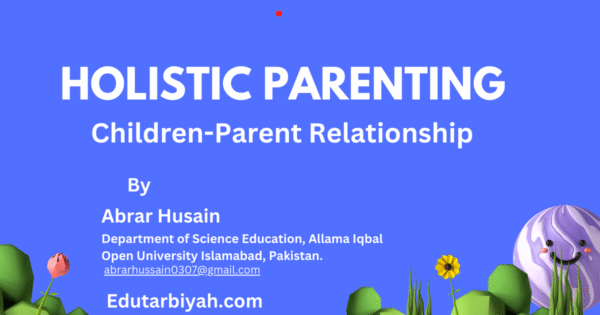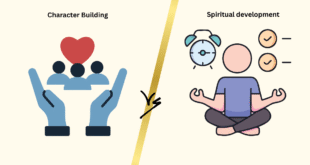Social interaction plays a critical role in the overall development of children. One of the most essential environments for fostering this interaction is the family unit. Families serve as the primary space where social interaction begins from birth and continues throughout life. Within this nurturing environment, children can share their thoughts, express emotions, and engage in meaningful activities, setting the foundation for their personal growth.
In a family, relationships are maintained between all members, creating a supportive system that helps children learn and develop in an accessible and holistic manner. Parents are considered the key pillars in this structure, providing everything necessary for their child’s physical and emotional growth.
Children, especially before puberty, are highly influenced by the interactions within their family. This period is crucial for shaping their mindset, behavior, and even their beliefs. Parents play a central role in guiding them through these formative years, providing the time, care, and attention needed for development. However, certain circumstances, such as natural disasters or emergencies like pandemics, can challenge parents’ ability to give proper care. The COVID-19 pandemic, for example, highlighted the difficulties many parents faced in maintaining their children’s well-being during uncertain times.
Holistic Parenting: A Comprehensive Approach
Holistic parenting refers to a parenting approach that emphasizes the mutual engagement between parents and children. This approach is centered on meeting children’s basic needs, fostering their creativity, and facilitating their socialization. Holistic parenting is considered one of the most effective methods for ensuring a child’s balanced and complete development.
Understanding the Needs of Children
The needs of children go beyond just the fulfillment of basic physical necessities. Parents have a fundamental responsibility to develop their children’s Confidence, Creativity, and Character—collectively known as the three Cs. These three pillars are essential for building a strong foundation for children’s future success.
The developmental needs of children are categorized into the following key areas:
- Physical Needs: Proper nutrition, healthcare, and physical activity.
- Social Needs: Opportunities for interaction with peers and family.
- Intellectual Needs: Stimulation through education and creative activities.
- Emotional Needs: Emotional support and fostering a sense of security.
The Role of Parents in Fulfilling These Needs
Parents’ responsibilities extend beyond just fulfilling their children’s physical needs. Parents are also responsible for nurturing all aspects of their children’s development, ensuring that each need is met on time.
Providing basic education is an essential parental duty, whether it’s through formal schooling or informal methods. For example, parents can engage children by asking questions like, “What is this?” or “How will this help us?” to stimulate curiosity and promote learning.
The first five years of a child’s life are crucial for their social and personality development. During this period, communication and interactions with family members are vital. Lack of love, care, and attention during these formative years can lead to emotional difficulties. On the other hand, positive parental qualities—such as sensitivity, responsiveness, and a loving nature—are instrumental in supporting children’s healthy growth.
Holistic Parenting: Building a Strong Parent-Child Relationship
The parent-child relationship is central to the development of children’s psychological, emotional, and social well-being. A healthy family environment fosters better adaptation and growth in children, helping them navigate challenges more effectively. For example, families that regularly engage in problem-solving together can teach children valuable coping skills and how to handle stressful situations.
However, when families face unexpected challenges, such as economic hardship or health crises, maintaining a balanced family dynamic can become more difficult. Yet, even in such situations, families can work together to find solutions, teaching their children resilience and adaptability.
Strategies to Strengthen the Parent-Child Bond
To enhance the parent-child relationship, there are several strategies that parents can adopt:
- Spending Quality Time Together: Children learn best through observation and participation. Spending time with them helps them absorb positive behaviors and strengthens the emotional connection.
- Loving and Caring for Your Children: Love and affection are foundational to a child’s emotional development. Treating children with love and respect fosters a sense of security and well-being.
- Giving Value to Your Children: Valuing children’s opinions and efforts boosts their confidence and helps them develop a sense of responsibility.
- Providing Free Time: Allowing children some free time to engage in activities they enjoy promotes creativity and helps them learn independently.
- Encouraging Physical Activity: Encouraging children to participate in physical activities and sports helps them fulfill their physical development needs while learning essential life skills.
Conclusion
In conclusion, the parent-child relationship is a dynamic and bidirectional interaction that is crucial for the proper growth, development, and creativity of children. Strong relationships enable children to learn more effectively, helping them develop intrinsic qualities like confidence, creativity, and character. The most effective ways to strengthen this relationship are through time, care, love, attention, and trust. By fostering a loving and supportive environment, parents can ensure their children’s healthy development and future success.
 Edutarbiyah English Blog of Parenting and Tarbiyah
Edutarbiyah English Blog of Parenting and Tarbiyah



